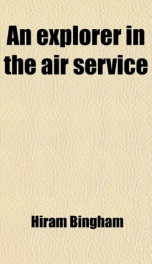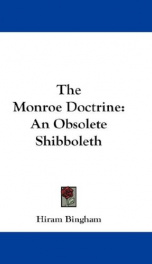an explorer in the air service

Purchase of this book includes free trial access to www.million-books.com where you can read more than a million books for free. This is an OCR edition with typos. Excerpt from book: CHAPTER III WAR FEVER IN WASHINGTON ON my return to Washington on May 13, the city looked more warlike, for in the mean time orders had been issued that all officersonactive duty should wear service uniforms. At the same time this brought out an amusing feature of our unpreparedness which was particularly striking to one who had just been associating with the appropriately uniformed officers of the Royal Flying Corps. They wore wings, but none of them wore spurs, while at Washington the officers in the Aviation Section of the Signal Corps wore spurs, but did not wear wings. About six months later, our military aviators were authorized by the General Staff to wear wings, but when wearing boots were still obliged to wear spurs. Six months later, the War College, after we had been at war for a year, woke up to the ridiculous side of forcing aviators to wear spurs, when obviously from their wings they used airplanes and not horses, and issued anew regulation that aviators when wearing boots would textit{not wear spurs. This was permitted, however, only as long as we were actively engaged in war, and in the following December the rule was changed back again, so that when I returned from France in January, 1919, I received a similar shock to this one after my first visit to Toronto, and found the unfortunate aviator once more compelled to wear spurs when wearing boots. It would be interesting to delve into the inner consciousness of the dear old boys down in the textit{sancta sanctorum of the War College. It is a queer sense of humor that requires a field officer, who in the course of his duties suddenly is called upon to mount his winged steed, to divest himself of his spurs and put them in his pocket for safety. I speak the more feelingly on this matter because of one Sunday ...
Info about the book
Author:
Series:
Unknown
ISBN:
1477547762
Rating:
5/5 (3)Your rating:
0/5
Languge:
English
Users who have this book
Users who want this book
What readers are saying
What do you think? Write your own comment on this book!
write a commentif you like an explorer in the air service try:
Other books by this author
Do you want to read a book that interests you? It’s EASY!
Create an account and send a request for reading to other users on the Webpage of the book!




